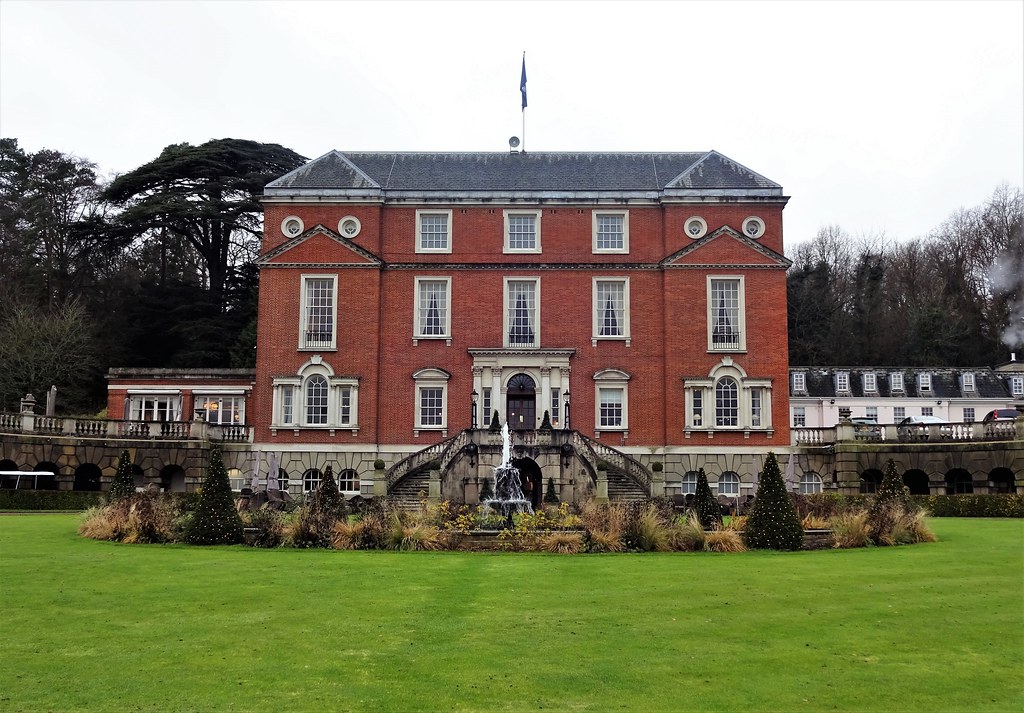
Neighbouring Epsom Downs Race Course, Woodcote Park is merely the country club for the magnificent Royal Automobile Club on Pall Mall; an area well known for gentlemen’s clubs. As one might surmise, the club’s raison d’ętre centred very much on the then recently invented motor vehicles. Many races were founded by the RAC, including the Tourist Trophy, the first British Grand Prix at Brooklands and the London to Brighton Veteran Car Run. The first “Emancipation Run” was to celebrate the passing of the Locomotives on Highway Act 1896. With this new law the speed limit increased from 4 to 14 mph. With the increased speed, an escort several yards ahead waving a red flag to warn people of an approaching vehicle was no longer a requirement...that would be a tough gig!
At one time owned by the Abbey of Chertsey, hilly Woodcote Park serves as the club where members of RAC can drive from the city to practice country sport, which includes two golf courses. The estate was purchased in 1913 and as was the case for many sporting clubs, war intervened with part of the grounds taken over for military use. The Universities and Public Schools volunteer brigade of the Royal Fusiliers were housed at Woodcote Park prior to shipping out. Sadly, the brigade was virtually wiped out at the Somme and the camp became a convalescent home for Canadian troops. The club’s bumpy road continued as in 1934 the house was gutted by fire. Luckily a grand drawing room survives. The room was shipped to the United States in 1927 and installed in Boston’s Museum of Fine Arts! This is the very same museum I visited in 1987 for the one and only time. While the museum is well worth a visit, I caution visitors to take care in their choice of parking. Chasing to the end of the story, the three of us seeking a bit of culture returned to the car only to find it missing. Since the car was borrowed the police naturally thought these damn kids hatched a plan to sell the car and claim it was stolen. Live and learn.
The club was again tagged for military use during the Second World War, this time for agricultural purposes. It is remarkable the club endured with golf or that Herbert Fowler’s course could survive such abuse. Yet persevere it did and by the Queen’s Coronation in 1953 Fowler’s course was back in action. On the rather unruly terrain which was Fowler's 9 hole C Course, a new 18 course was built, not surprisingly called the Coronation Course. T Mackenzie recently supervised a bunker project on The Old which included some greens being altered and few new tees. The overwhelming impression of the work is the Old Course doesn’t feel very old or much like a Fowler design. For those familiar with Royal Wimbledon, the style of bunkering is very similar. That is, many of the bunkers are homogenous in size and angle. Originally the course was known to have large bunkers. What sets Woodcote Park apart is the size of the greens. Much like Fowler’s Beau Desert, the greens are immense if not nearly as interesting.
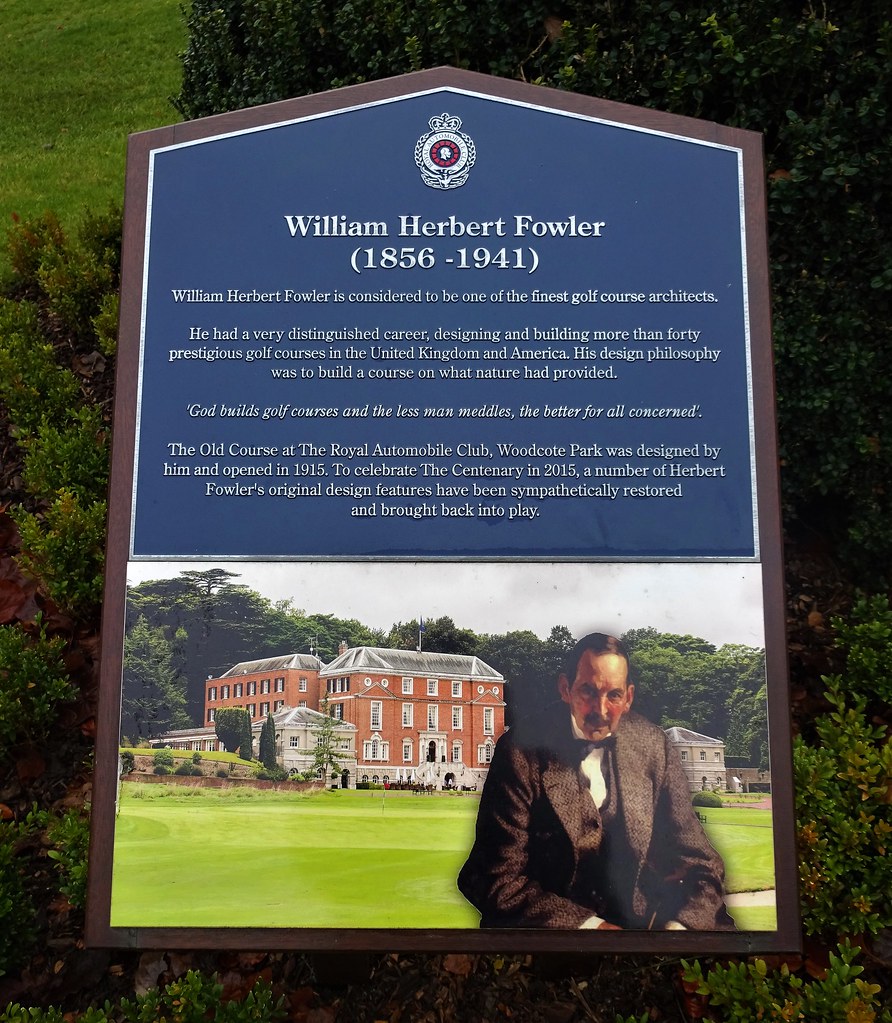
This aerial shows more than 18 holes. The Old is made up of the right side of aerial. It would seem the current 16 through 18 are not original Fowler holes and that nine holes in this routing (the original C course, A and B make up the Old Course) no longer exist. This area is the Coronation Course.
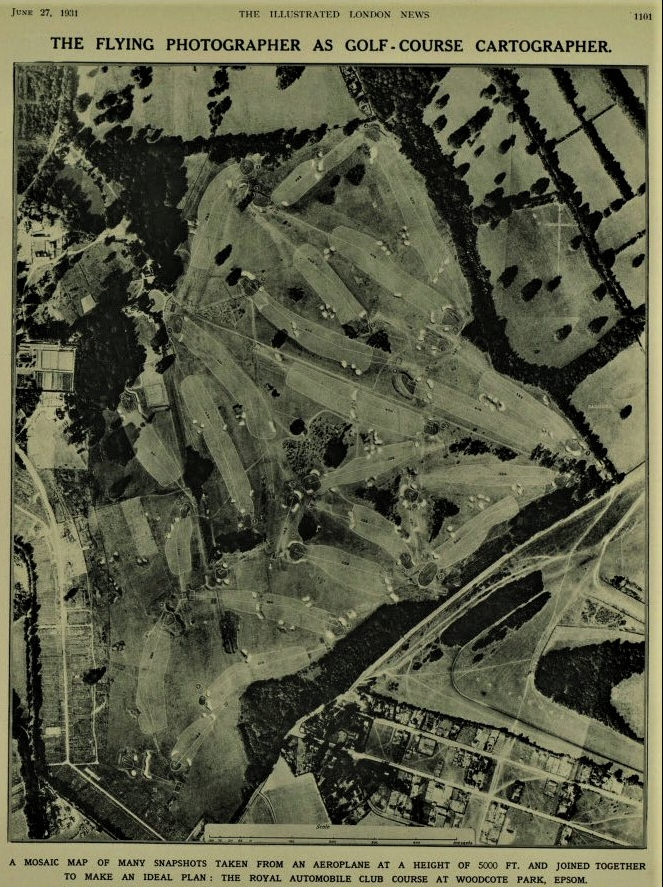
The 1st is not a particularly good opening hole if one believes it's chief function should be a presage of holes to come. Hemmed between trees right and bunkers left before turning sharply right and uphill, this is not a gentle handshake. Other than the penal nature of the hole, the uncharacteristic element is a blind bunker at the base of the rise.
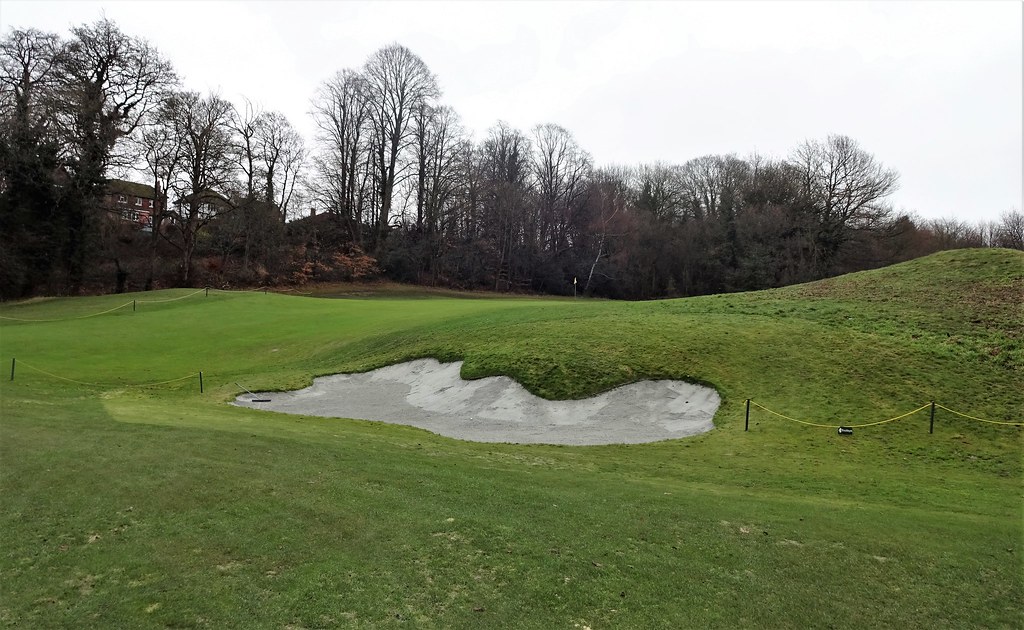
Climbing to the next tee, we come across a flat hole hole punctuated by right flank bunkers.
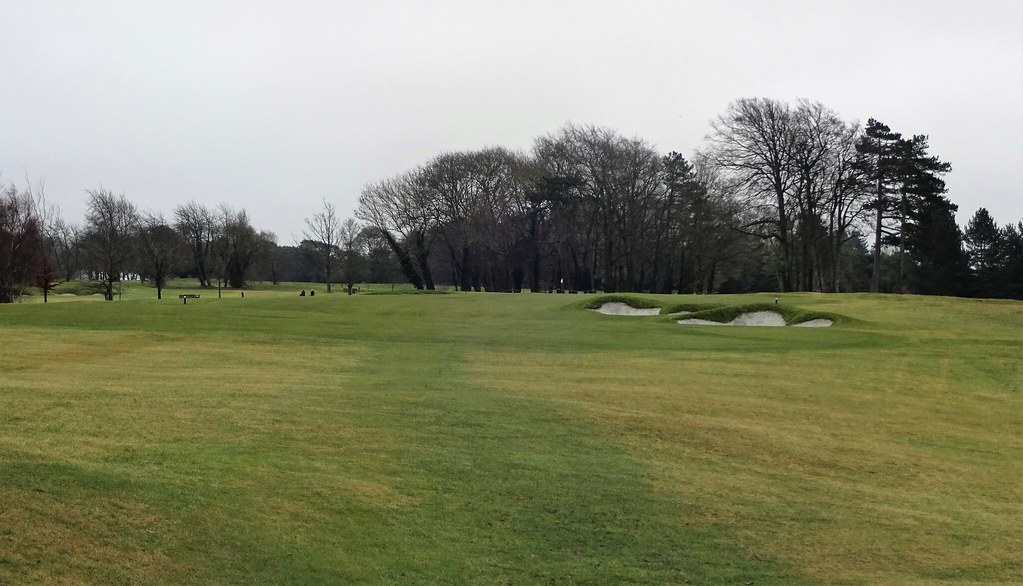
The green is very large with a prominent step-up.
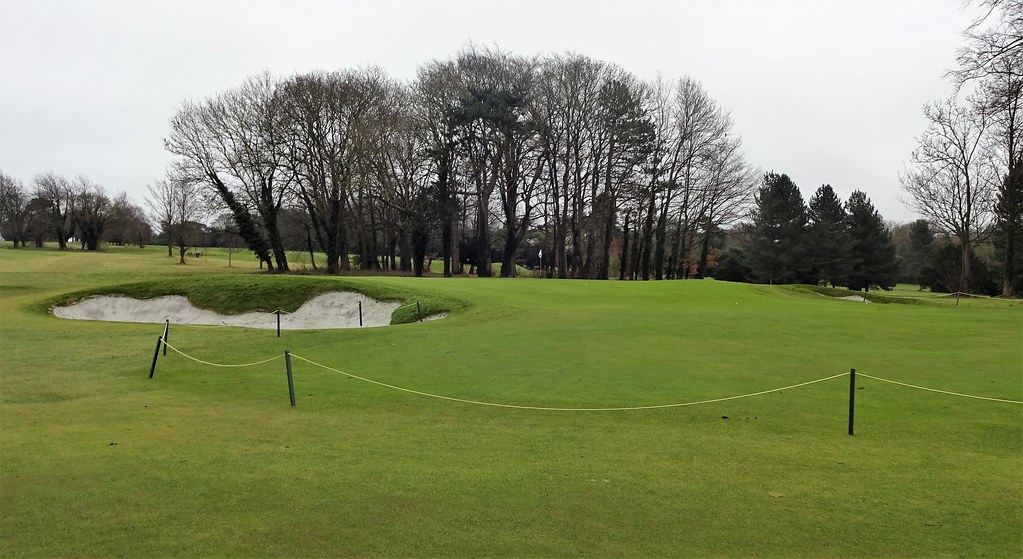
After a less than inspired start, the short third hints at good things to come. Despite the gloom of December in England, the two-tier green is obvious.
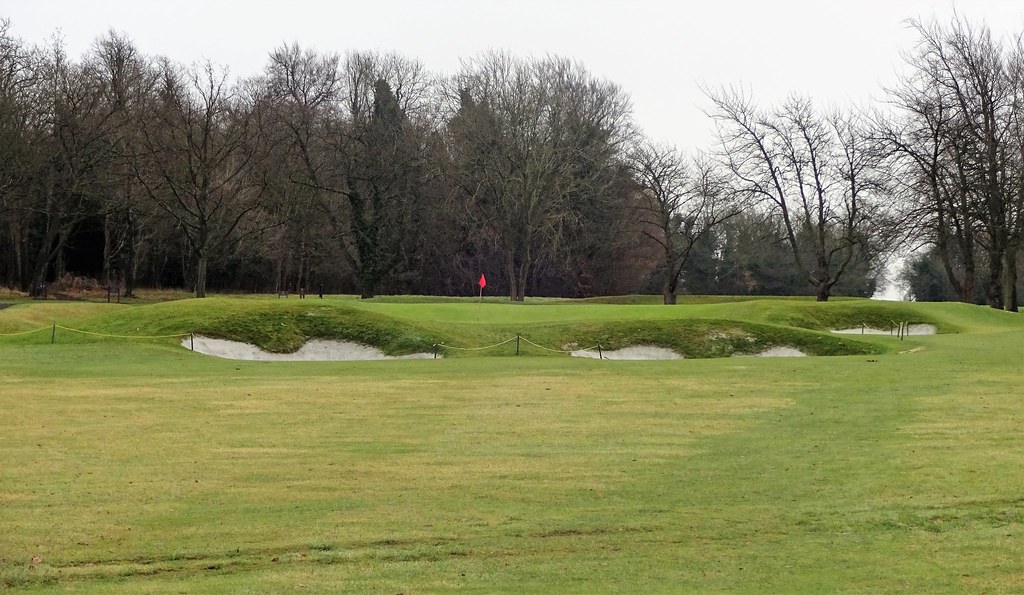
A down n' up long hole follows. The reader can see the bunkering entices the golfer to take on the drive as there is space right. What is more difficult to see is the slope of the fairway feeds into the bunkers. Throughout the course, the bunkering is generally about tempting rather than forcing play. However, below is a good example of what I mean by the angle and size of bunkers. As at Wimbledon, the design is a bit too uniform and sends a visual message of rote design despite the excellent placement of sand.
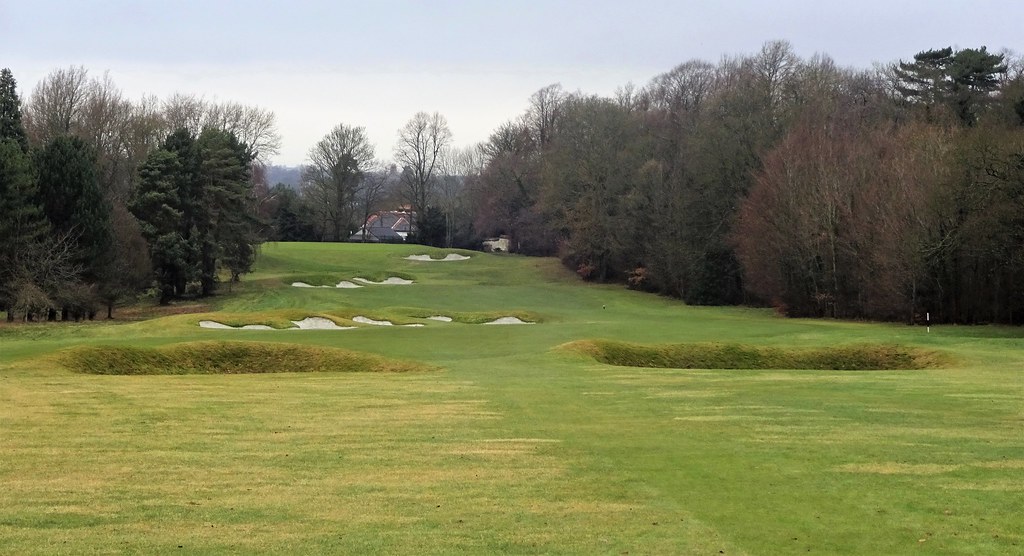
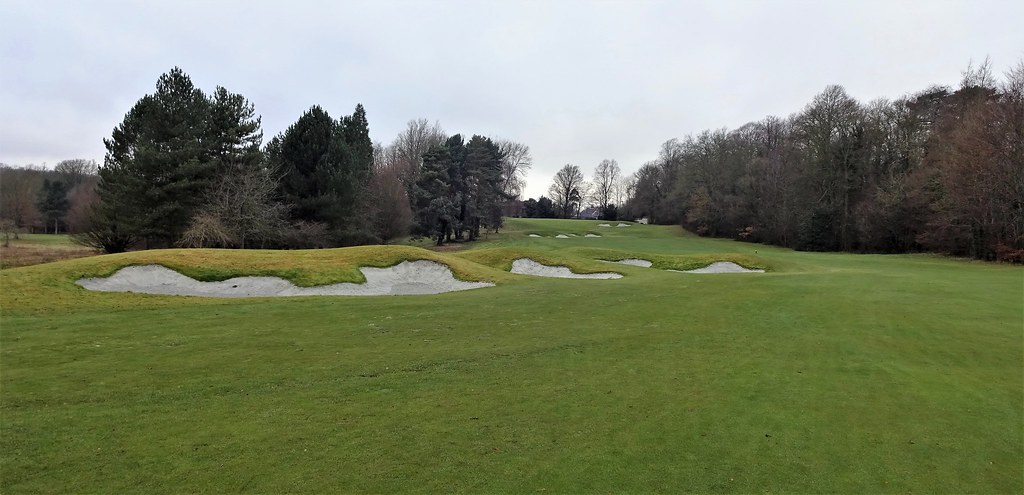
I like the 5th very much. It is a classic hole which offers distinct choices of distance off the tee.
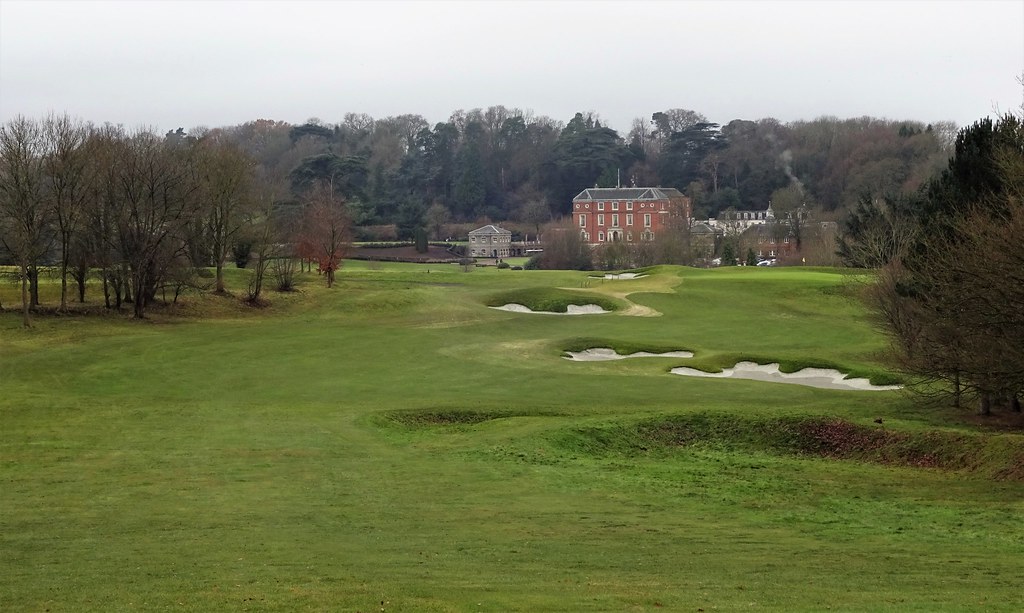
A very safe drive will leave a challenging approach.
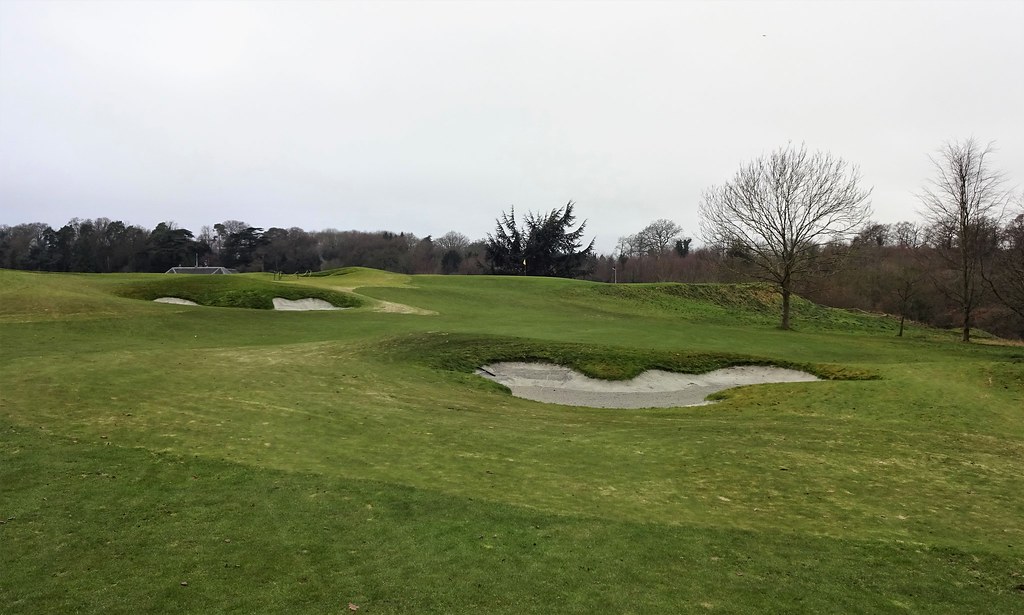
The two-tier green.

A very tough down n' up two shotter, the 6th has one of the biggest greens on the course. Truth be told, the course could do with a bit more green size variety.
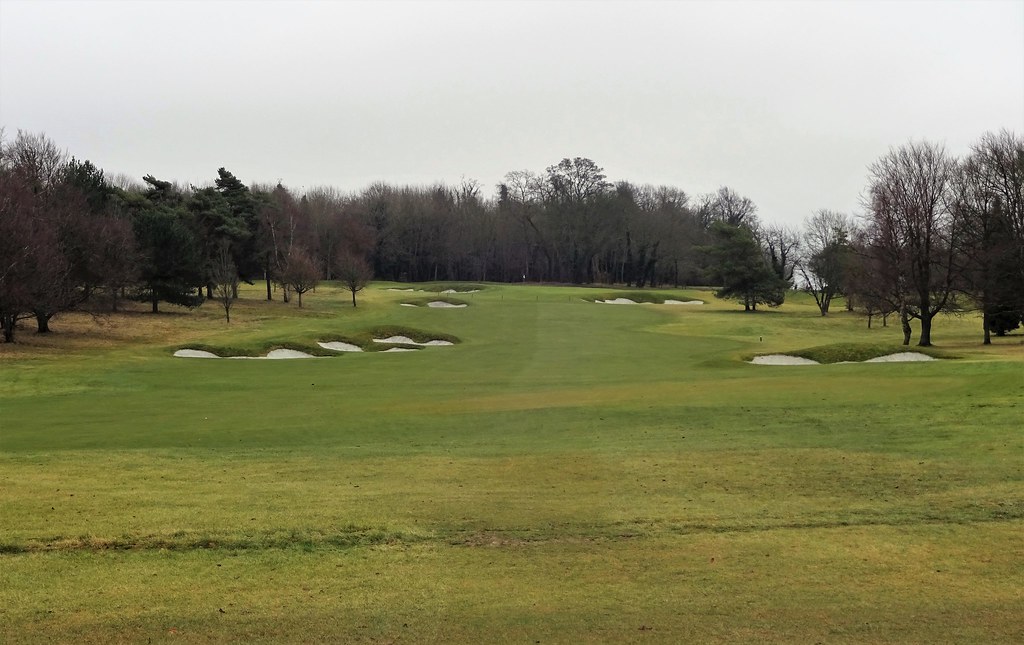
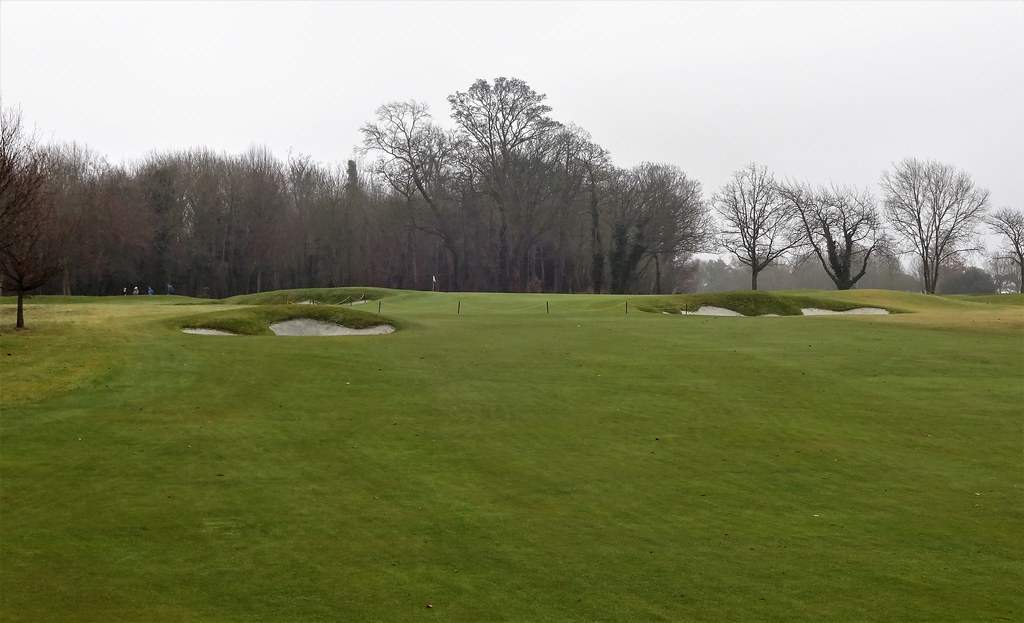
The 7th runs toward Epsom Downs. At the 8th I finally caught the Fowler feeling. Another large green with a massive false front hidden by two forward bunkers.

The next too felt more like a Fowler hole...it is awkward looking from the tee.
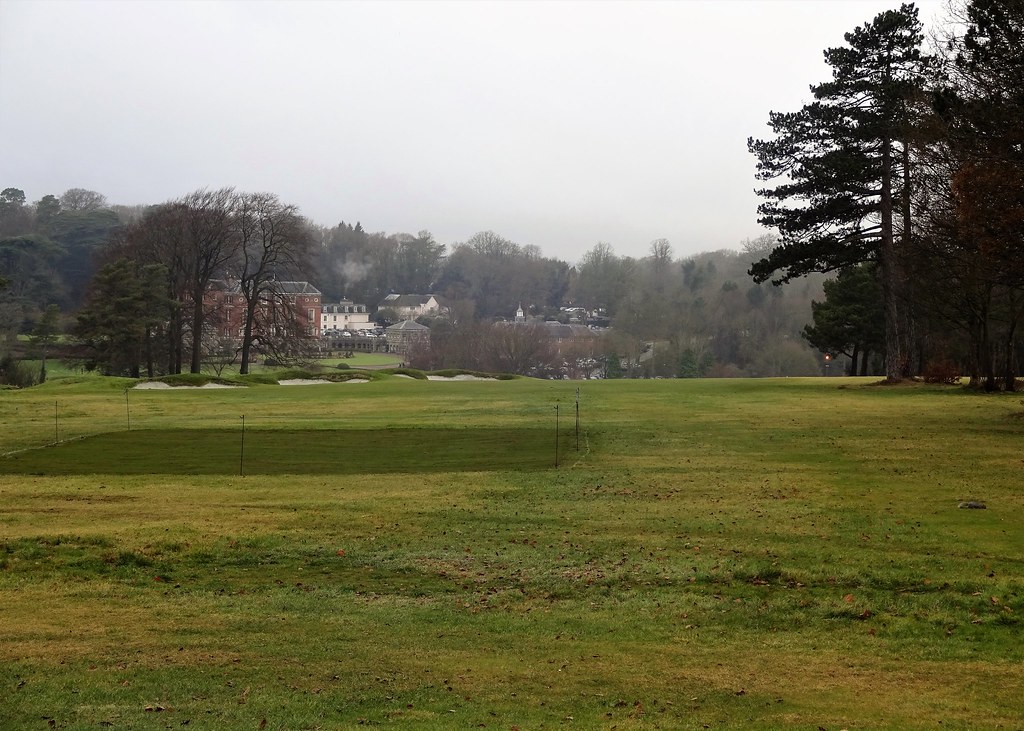
The green is on the downslope.
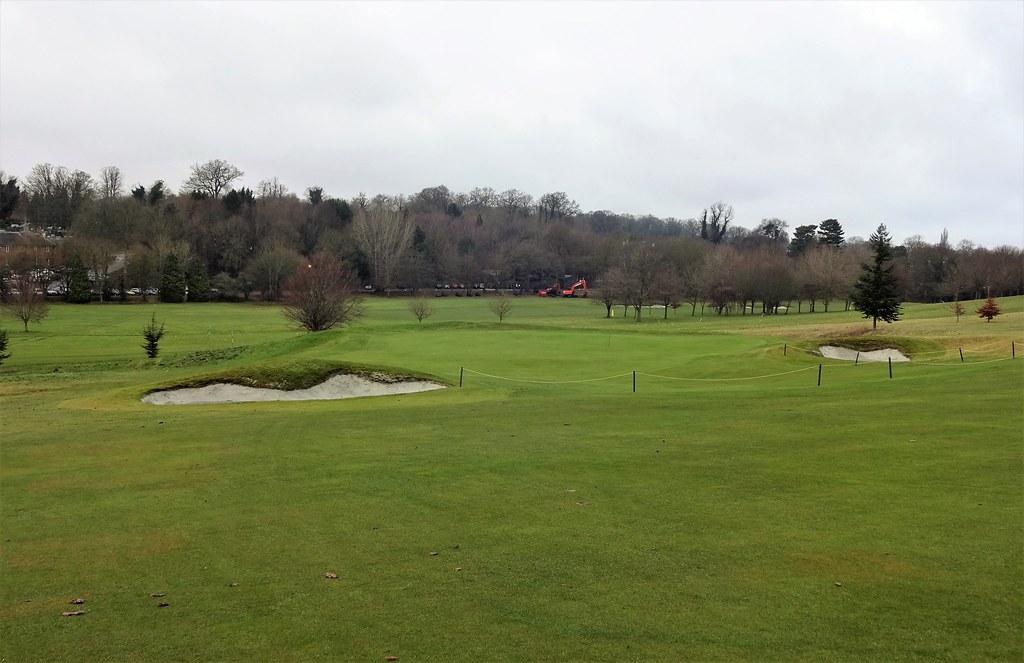
More to follow.
Ciao